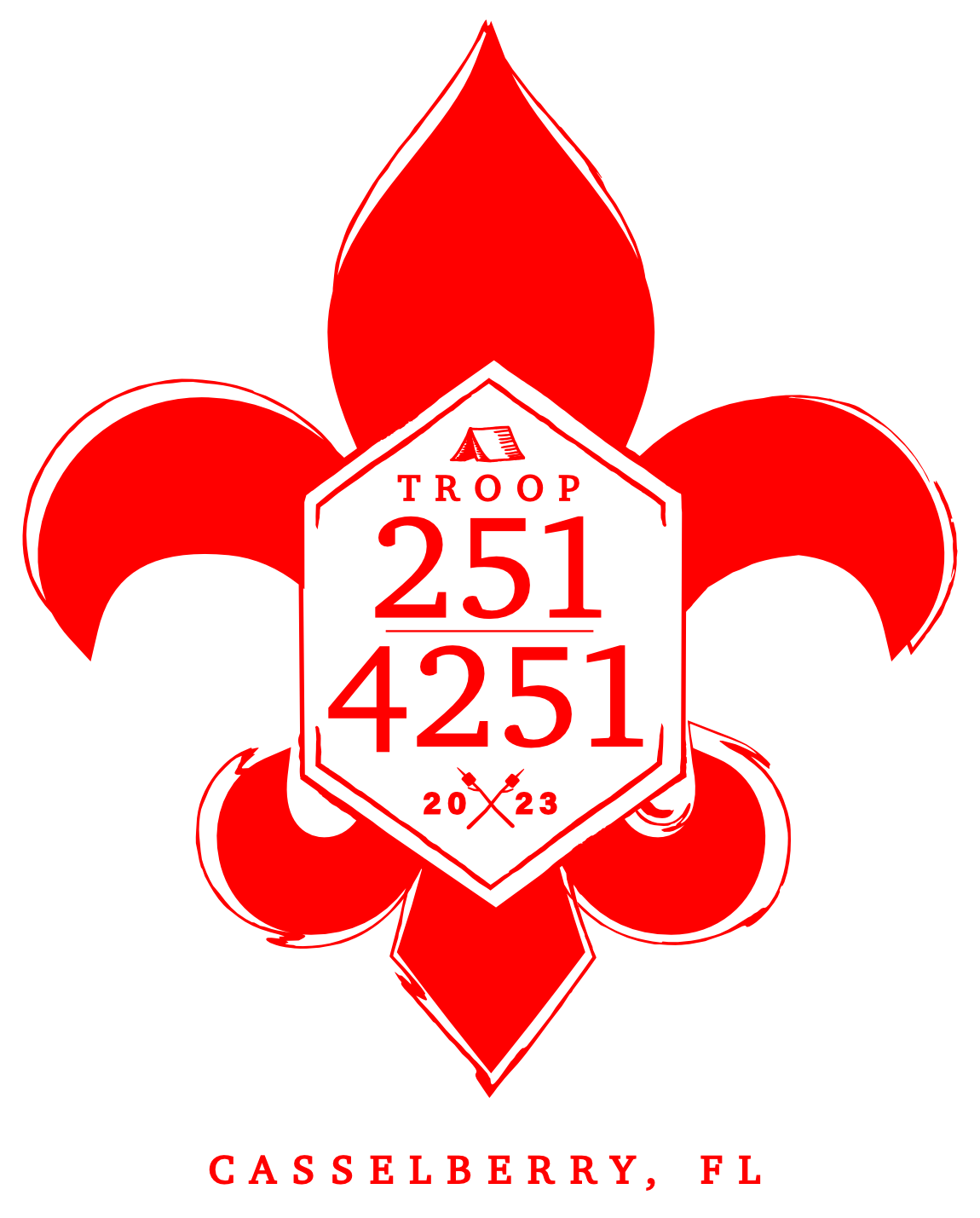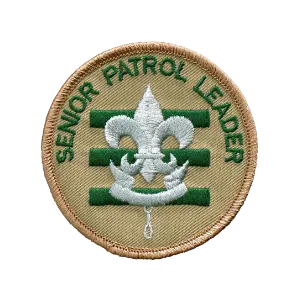Scout Ranks
The requirements for the Scout, Tenderfoot, Second Class, and First Class ranks may be worked on simultaneously; however, these ranks must be earned in sequence.
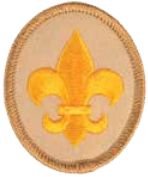
Scout Rank
Earned the Cyber Chip Award
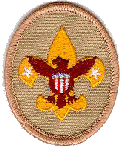
TENDERFOOT
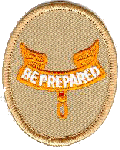
SECOND CLASS
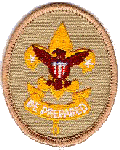
FIRST CLASS
3 overnight campouts successfully completed
Note that Star and Life requirements each allow two non-Eagle-required merit badges. It is the Scout’s decision, however, to earn more—or all—of his Star and Life badges from the Eagle-required list. Further, Star, Life, & Eagle ranks are leadership skills oriented.

STAR RANK
Be active in your troop for at least four months as a First Class Scout.
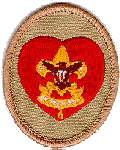
LIFE RANK
Be active in your troop for at least six months as a Star Scout.

EAGLE SCOUT RANK
Be active in your troop for a period of at least six months as a Life Scout.
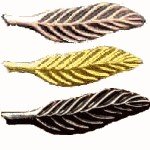
EAGLE PALMS
Be active in the Boy Scouts of America for at least three months after becoming an Eagle Scout or after the last Palm was earned.
What is a merit badge?
A Scout can learn about sports, crafts, science, trades, business, and future careers as they earn merit badges. There are more than 100 merit badges (Currently, there are 139 available.). Any Scout may earn any merit badge at any time. You don’t need to have had rank advancement to be eligible.
Once a Scout has started working on a Merit Badge (i.e. obtained a signed “Blue Card” Application for Merit Badge from his Scoutmaster, had an initial discussion with a merit badge Counselor, and started working on the requirements), he may continue using those requirements until he completes the badge or turns 18.

What is The Outdoor Code?
The Outdoor Code / As an American, I will do my best to –
- Be clean in my outdoor manners.
- I will treat the outdoors as a heritage.
- I will take care of it for myself and others
- I will keep my trash and garbage out of lakes, streams, fields, woods, and roadways.
- Be careful with fire.
- I will prevent wildfire.
- I will build my fires only where they are appropriate.
- When I have finished using a fire, I will make sure it is cold out.
- I will leave a clean fire ring, or remove all evidence of my fire.
- Be considerate in the outdoors.
- I will treat public and private property with respect.
- I will use low-impact methods of hiking and camping. and
- Be conservation-minded
- I will learn how to practice good conservation of soil, waters, forests, minerals, grasslands, wildlife, and energy.
- I will urge others to do the same.
What is the PLC (Patrol Leaders’ Council)
The patrol leaders’ council sometimes called the PLC is a meeting for the youth leaders, not the adult leaders. While certain adult leaders will sit in on the meeting and give advice, it is the responsibility of youth leaders to handle planning and conducting the troop’s activities. The patrol leaders’ council is composed of the following voting members: senior patrol leader, assistant senior patrol leader, patrol leaders, assistant patrol leaders, troop guide, Venturing crew president, and the troop’s junior leaders.
The troop’s activities are selected and planned at the annual program planning conference. The troop’s yearly plan is then submitted to the troop committee for approval. The troop committee either approves the plan or makes alternative suggestions for the patrol leaders’ council to consider. At its monthly meetings, the patrol leaders’ council organizes and assigns activity responsibilities for the weekly troop meetings. The troop committee chair interacts with the patrol leaders’ council along with the Scoutmaster(s).
What are the Troop’s Junior Leaders?
The troop is actually run by its youth leaders. With the guidance of the Scoutmaster and his or her assistants, they plan the program, conduct troop meetings, and provide leadership among their peers.
Junior Leader Positions
- Senior patrol leader – The SPL is the top junior leader in the troop. They lead the patrol leaders’ council and, in consultation with the Scoutmaster, appoint other junior leaders and assign specific responsibilities as needed.
- Assistant senior patrol leader – The ASPL fills in for the senior patrol leader in their absence. They are also responsible for training and giving direction to the quartermaster, scribe, troop historian, librarian, and instructors.
- Patrol leader – The Patrol Leader is elected by the patrol members and they give leadership to members of their patrol and represent them on the patrol leaders’ council.
- Assistant patrol leader – The Assistant Patrol Leader is elected by the patrol member and fills in for the patrol leader in their absence.
- Troop guide – The Troop Guide is embedded in a patrol. This Scout is an advisor and a guide to the new Scouts in the patrol. This scout works closely with the Assistant Scoutmaster working with New Scouts.
- Historian – The historian is an appointed junior leader position. They collect and maintain troop memorabilia and information on former troop members.
- Librarian – The librarian is an appointed junior leader position. They keep troop books, pamphlets, magazines, and audiovisuals available for use by troop members. They are also responsible for the merit badge counselor list and work closely with the Troop Chair to ensure it is available for use by troop members.
- Instructor – The instructor is an appointed junior leader position. They teach one or more advancement skills to troop members.
- Chaplain Aide – The chaplain aide is an appointed junior leader position. They assist in troop religious services and promotes religious emblems program.
- Junior Assistant Scoutmaster – The Junior Assistant Scoutmaster is a Scout who is 16 years or older and supervises and supports other youth leaders as assigned.
- Den Chief – The den chief is an appointed junior leader position. They are embedded with a Cub Scout den for one calendar year and they work with a Cub Scout den as a guide.
- Quartermaster – The quartermaster is an appointed junior leader position. They are responsible for troop supplies and equipment. Further, they work closely with the Assistant Scoutmaster (Safety Advisor) on camping events and the Troop Chair for purchasing needs.
- Scribe – The scribe is an appointed junior leader position. They record the PLC meeting minutes and serve as the troop’s patrol leader council’s secretary.
- Webmaster – The webmaster is an appointed junior leader position. They assist in maintaining and promoting the troop online at the direction of the troop’s patrol leader council. They work closely with the Troop Chair.
- Outdoor Ethics Guide – The outdoor ethics guide is an appointed junior leader position. They are responsible for troop meeting the Leave No Trace Standards at camp as well as ensuring Scouts are following the Outdoor Code. They are responsible to promote the Outdoor Ethics Awareness Award.
- Troop OA Representative – The troop OA representative is an appointed junior leader position. They are responsible for representing the troop at OA meetings and handling the tap-out election process in the troop, They are a member of the OA in good standing.
- Bugler – The bugler is an appointed junior leader position. They are responsible to play the bugle as requested by troop leadership and play taps during the evening closing ceremony. They should show a positive Scout Spirit at all times.
What is Scouting’s Teaching EDGE?
Scouting’s Teaching EDGE helps the Scouts from Tenderfoot and Life ranks. It requires the Scout to use the BSA EDGE method to help somebody else learn a skill. This is a four-step method for teaching a skill. It is sometimes called Scouting’s Teaching EDGE.
EDGE is very basic, but it really does work. It will help Cub Scouts learn and retain skills also. So it is not only for Scouts BSA and Venturers, but for den leaders also. The BSA EDGE Method is a four-step method for teaching a skill:
Explain | Demonstrate | Guide | Enable
- Explain – First explain what you will be doing. Tell them the steps involved. Visual aids might be helpful for this step. Use questions to gauge their understanding.
- Demonstrate – Show them how to do the skill. Demonstrate the steps using the actual materials. Describe what you are doing.
- Guide – Let them practice the skill. Guide and coach them as they try to do it themselves. This step will take the most time.
- Enable – Enable them by letting them do the skill themselves without any intervention.
What are the Aims and Methods of Scouting?
THE AIMS AND METHODS OF SCOUTING – The Scouting program has specific objectives, commonly referred to as the “Aims of Scouting.” They are character development, leadership development, citizenship training, and personal fitness. Leadership development is also one of Scoutings eight methods contributing to both good character and good citizenship.
The methods by which the aims are achieved are listed below in random order to emphasize the equal importance of each.
Ideals – The ideals of Scouting are spelled out in the Scout Oath, the Scout Law, the Scout motto, and the Scout slogan. The Scout measures themselves against these ideals and continually tries to improve. The goals are high, and, as they reach for them, they have some control over what and who they become.
Patrols – The patrol method gives Scouts an experience in group living and participating citizenship. It places responsibility on young shoulders and teaches Scouts how to accept it. The patrol method allows Scouts to interact in small groups where they can easily relate to each other. These small groups determine troop activities through their elected representatives.
Outdoor Programs – Scouting is designed to take place outdoors. It is in the outdoor setting that Scouts share responsibilities and learn to live with one another. It is here that the skills and activities practiced at troop meetings come alive with purpose. Being close to nature helps Scouts gain an appreciation for God’s handiwork and humankind’s place in it. The outdoors is the laboratory for Scouts to learn ecology and practice conservation of nature’s resources.
Advancement – Scouting provides a series of surmountable obstacles and steps in overcoming them through the advancement method. The Scout plans their advancement and progresses at their own pace as they meet each challenge. The Scout is rewarded for each achievement, which helps them gain self-confidence. The steps in the advancement system help a Scout grow in self-reliance and in the ability to help others.
Association with Adults – Scouts learn a great deal by watching how adults conduct themselves. Scout leaders can be positive role models for the members of their troops. In many cases a Scoutmaster who is willing to listen to the Scouts, encourage them, and take a sincere interest in them can make a profound difference in their lives.
Personal Growth – As Scouts plan their activities and progress toward their goals, they experience personal growth. The Good Turn concept is a major part of the personal growth method of Scouting. Young people grow as they participate in community service projects and do Good Turns for others. Probably no device is so successful in developing a basis for personal growth as the daily Good Turn. The religious emblems program also is a large part of the personal growth method. Frequent personal conferences with their Scoutmaster help each Scout to determine their growth toward Scouting’s aims.
Leadership Development – The Scouting program encourages Scouts to learn and practice leadership skills. Every Scout has the opportunity to participate in both shared and total leadership situations. Understanding the concepts of leadership and becoming a servant leader helps a Scout accept the leadership role of others and guides them towards participating citizenship and character development.
Uniform – The uniform makes the Scout troop visible as a force for good and creates a positive youth image in the community. Scouting is an action program, and wearing the uniform is an action that shows each Scout’s commitment to the aims and purposes of Scouting. The uniform gives the Scout identity in a world brotherhood of youth who believe in the same ideals. The uniform is practical attire for Scout activities and provides a way for Scouts to wear the badges that show what they have accomplished.
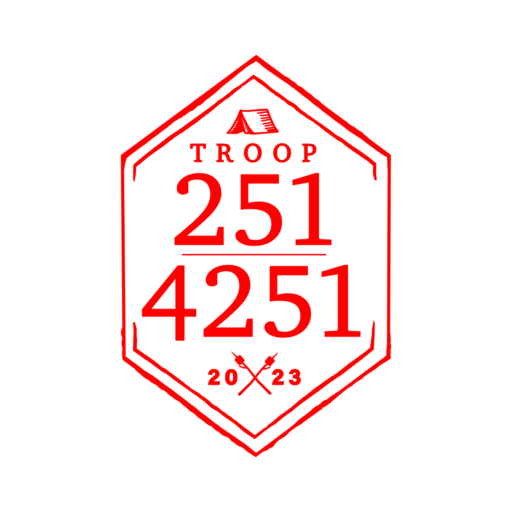
Scouting programs instill in youth the values found in the Scout Oath and Scout Law. Scouting helps youth develop academic skills, self-confidence, ethics, leadership skills, and citizenship skills that influence their adult lives.
Scout Oath
On my honor, I will do my best
To do my duty, to God and my country, and to obey the Scout Law;
To help other people at all times;
To keep myself physically strong, mentally awake, and morally straight.
Scout Law
A Scout is: Trustworthy, Loyal, Helpful,
Friendly, Courteous, Kind,
Obedient, Cheerful, Thrifty,
Brave, Clean, and Reverent
